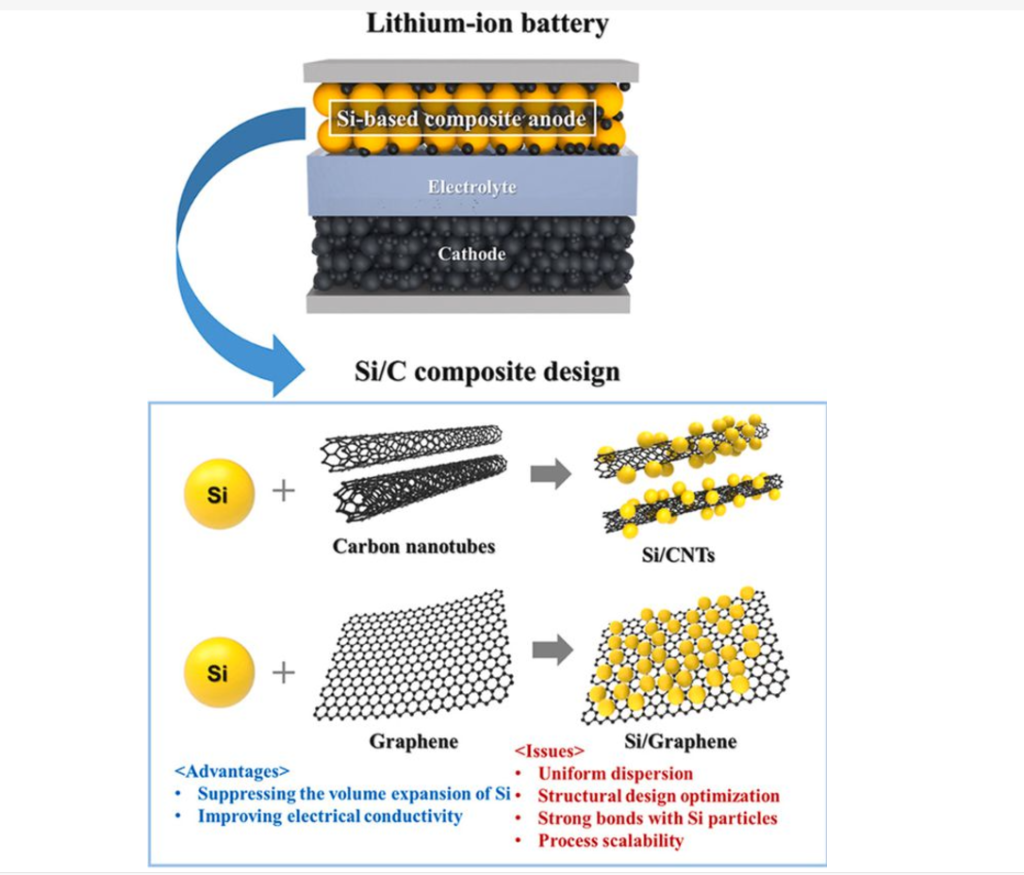Carbon Nanotubes in Battery Materials: Applications, Advantages, and Challenges
Carbon nanotubes (CNTs) have emerged as a groundbreaking material in the field of battery technology. Their unique structural, mechanical, and electrical properties make them a valuable additive for enhancing the performance of lithium-ion batteries (LIBs) and next-generation energy storage solutions. This article explores how CNTs are used in batteries, the key advantages they bring, real-world applications, market adoption, and the challenges they face in widespread deployment.

How Carbon Nanotubes Are Used in Batteries
1. Conductive Additives
In lithium-ion batteries, CNTs are commonly used as conductive additives in cathodes, anodes, and separator coatings. Their excellent electrical conductivity helps improve the overall charge-discharge efficiency by creating highly conductive networks that enhance electron transport within the electrodes.
- Cathodes: CNTs facilitate better electronic conductivity in cathodes, such as lithium cobalt oxide (LCO), lithium iron phosphate (LFP), and nickel-rich materials (NMC/NCA).
- Anodes: CNTs improve conductivity and mitigate volumetric expansion in silicon or silicon-graphite composite anodes, addressing one of the key challenges in battery durability.
- Separators: Coating separators with CNTs can reduce internal resistance, improve thermal stability, and prevent short circuits.
2. Structural Enhancements
CNTs are used as structural reinforcements in electrodes due to their exceptional mechanical strength. They improve the structural integrity of active materials, particularly during charge-discharge cycles that involve volumetric changes.
3. Energy Density Boosters
By forming a three-dimensional conductive network, CNTs allow for higher loadings of active materials, which directly contributes to increased energy density. Their nanoscale dimensions enable better contact with the active material, enhancing lithium-ion diffusion rates and boosting capacity.
4. Next-Generation Batteries
In emerging battery technologies such as solid-state batteries, lithium-sulfur (Li-S), and lithium-metal batteries, CNTs play a crucial role in enhancing conductivity and stabilizing interfaces. For instance:
- In Li-S batteries, CNTs are used to anchor sulfur and reduce polysulfide shuttling.
- In solid-state batteries, CNTs improve ionic conductivity at the solid-electrolyte interface.
Advantages of Using Carbon Nanotubes in Batteries
1. High Electrical Conductivity
CNTs have a conductivity of up to 10610^6 S/m, outperforming many traditional conductive additives such as carbon black and graphite. This superior conductivity minimizes energy losses and improves power delivery.
2. Exceptional Mechanical Properties
With a tensile strength of up to 63 GPa and high flexibility, CNTs enhance the durability of electrodes, reducing microcracking during cycling.
3. Lightweight Material
CNTs offer a high strength-to-weight ratio, allowing manufacturers to reduce the overall weight of the battery without compromising performance.
4. Thermal Conductivity
The thermal conductivity of CNTs, which ranges from 2000–6000 W/m·K, improves heat dissipation, reducing the risk of thermal runaway in high-power applications.
Real-World Applications of CNTs in Batteries
1. Electric Vehicles (EVs)
CNT-enhanced lithium-ion batteries are being adopted in EVs to improve range, charge times, and overall energy efficiency. For instance, CNTs are used in silicon-dominant anodes to boost capacity, meeting the demand for higher mileage.
2. Consumer Electronics
Smartphones, laptops, and wearable devices benefit from CNT-enabled batteries, offering extended usage times and faster charging. Samsung and other leading manufacturers are exploring CNTs to achieve higher energy densities in compact designs.
3. Grid Storage
In energy storage systems for renewable energy grids, CNTs enhance the cycle life and power density of batteries, addressing the intermittent nature of solar and wind power.
4. Aerospace and Defense
CNT-based batteries are used in drones, satellites, and military equipment, where lightweight, high-capacity, and robust energy storage is critical.
Market Trends and Adoption
Global Market Size
The global market for CNTs in energy storage was valued at approximately USD 1.2 billion in 2023 and is projected to grow at a CAGR of 18–20% over the next decade.
Key Players
Prominent manufacturers such as LG Chem, SGL Carbon, Nanocyl, and Arkema are integrating CNTs into their battery production lines. Startups like Cabot Corporation are also contributing innovative CNT solutions for battery applications.
Regional Growth
- Asia-Pacific: Dominates the market, driven by battery production hubs in China, South Korea, and Japan.
- Europe and North America: Increasing adoption of CNT-enhanced batteries in EVs and grid storage projects.
Challenges in the Use of Carbon Nanotubes
1. High Cost of Production
CNTs are expensive to produce due to complex synthesis methods such as chemical vapor deposition (CVD). Large-scale adoption is hindered by cost constraints, particularly in low-cost consumer electronics.
2. Uniform Dispersion
Achieving uniform dispersion of CNTs in electrode slurries is a technical challenge. Poor dispersion can lead to agglomeration, reducing the effectiveness of CNT networks.
3. Environmental and Health Concerns
The potential toxicity of CNTs during production and handling poses environmental and health risks. Regulatory compliance may require additional safety measures, increasing costs.
4. Integration Complexity
Incorporating CNTs into existing manufacturing processes without compromising scalability remains a hurdle. Compatibility with other battery materials is another area requiring further research.
Conclusion
Carbon nanotubes are revolutionizing the battery industry by addressing critical challenges in conductivity, energy density, and durability. From enhancing lithium-ion batteries to enabling next-generation technologies like solid-state and lithium-sulfur batteries, CNTs hold immense potential. Despite the high costs and integration challenges, advancements in production techniques and increasing demand for high-performance batteries in EVs and energy storage systems are driving market adoption.
As research and development continue to optimize CNT applications, we can expect a future where carbon nanotubes play a pivotal role in powering sustainable and efficient energy solutions globally.

